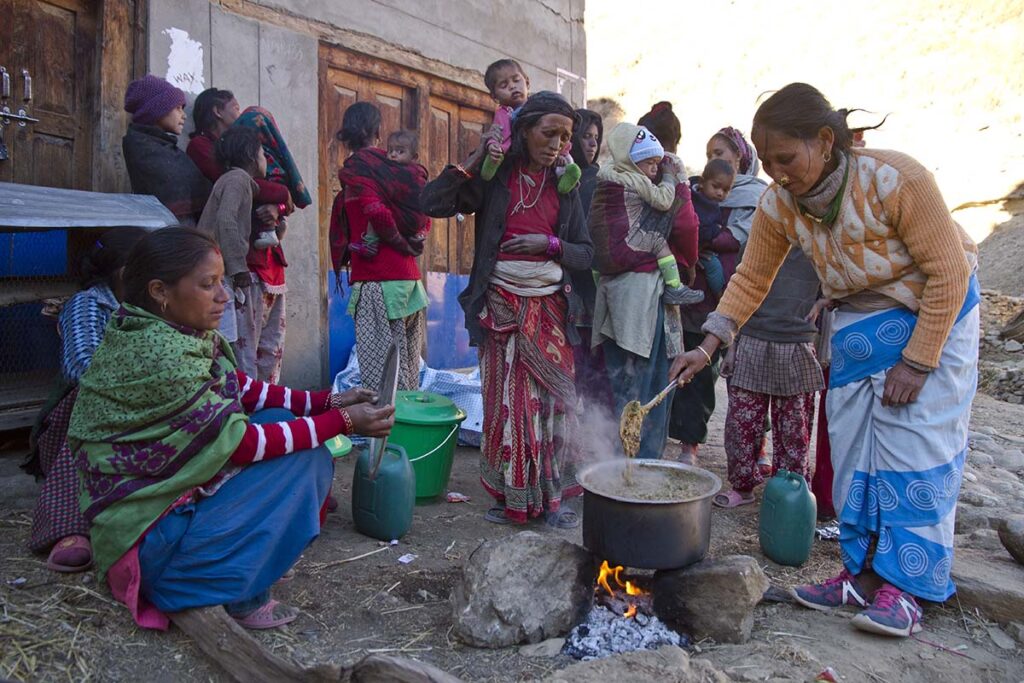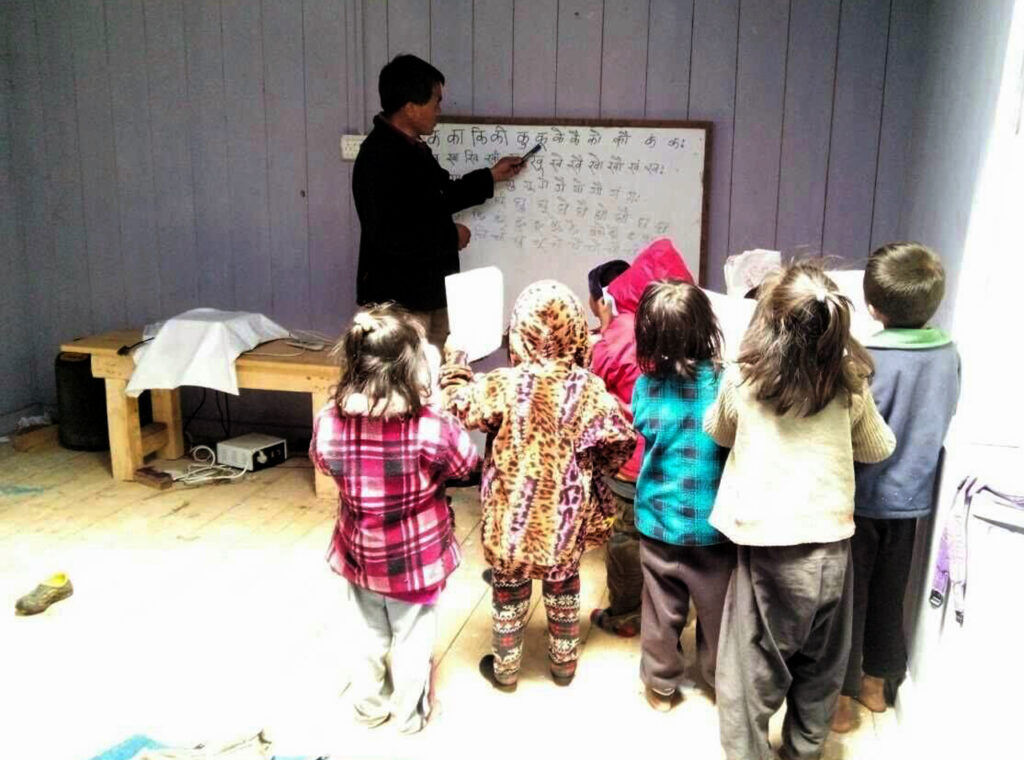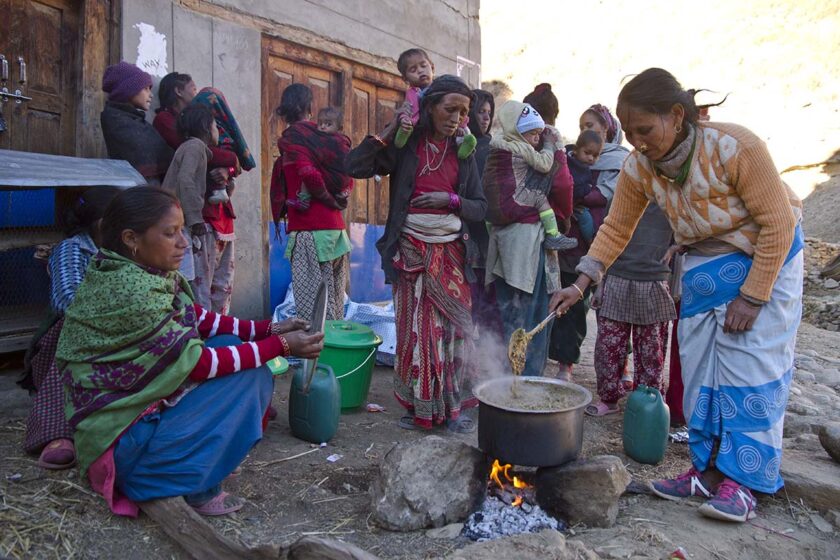Nepal, a country rich in culture and natural beauty, unfortunately struggles with high levels of poverty. In this article, we aim to shed light on the various causes behind Nepal’s poverty, exploring its economic, political, and social dimensions.
By delving into the intricate web of factors that contribute to this issue, we hope to foster a deeper understanding of Nepal’s challenges and pave the way for potential solutions. Whether you are interested in global development or simply curious about Nepal’s plight, join us as we embark on a thought-provoking journey into the heart of its poverty dilemma.
Overview of Nepal’s Poverty
Nepal, a country located in South Asia, is known for its picturesque landscapes and vibrant culture. Unfortunately, it is also marked by high levels of poverty. Understanding the causes and factors that contribute to Nepal’s poverty is crucial in devising effective strategies for poverty reduction.
Statistics on poverty in Nepal
According to recent data, Nepal has a poverty rate of around 21.6%, which means that more than one-fifth of the population lives below the poverty line. This translates to approximately 6.7 million people struggling to meet their basic needs. These statistics shed light on the urgency of addressing poverty in Nepal and the need for targeted interventions.
How poverty is measured in Nepal
In Nepal, poverty is primarily measured using the National Living Standards Survey (NLSS) conducted by the Central Bureau of Statistics. This survey considers various dimensions of poverty, including income, consumption, and access to basic services. By analyzing these factors, researchers can gain insights into the extent and depth of poverty in Nepal.
Historical Factors
Impact of colonization on Nepal’s economy
Nepal’s history of colonization has had lasting effects on its economy, ultimately contributing to the country’s current state of poverty. During the period of British colonization, Nepal was isolated from global trade, hindering its economic growth and development. The exploitation of resources and the imposition of unfair trade practices resulted in an economic setback that Nepal is still grappling with today.
Effects of political instability on poverty
Nepal’s political landscape has been marked by frequent changes and instability, which adversely affect its economy and exacerbate poverty levels. Political instability hampers long-term planning and discourages investment, leading to economic stagnation and a lack of opportunities for the population. This volatility has perpetuated the cycle of poverty by hindering the implementation of effective poverty reduction measures.
Influence of feudalism on poverty
Historically, Nepal’s social structure was characterized by a feudal system that concentrated power and resources in the hands of a few individuals. This social inequality perpetuated poverty, as access to resources, education, and opportunities were skewed in favor of the upper class. Although feudalism has largely been abolished, its legacy continues to contribute to socioeconomic disparities and hinder poverty alleviation efforts.
Geographical Factors
Effects of Nepal’s mountainous terrain on poverty
Nepal’s mountainous terrain poses unique challenges to poverty reduction efforts. The rugged landscape makes infrastructure development and connectivity difficult, particularly in remote areas. Limited transportation networks and inadequate access to markets impede economic growth and restrict opportunities for communities living in these regions, trapping them in a cycle of poverty.
Challenges of agriculture in Nepal
Agriculture plays a crucial role in Nepal’s economy, employing a significant portion of the population. However, the country faces numerous challenges in this sector, including inadequate irrigation systems, outdated farming techniques, and limited access to credit and technology. These factors hinder agricultural productivity and limit income generation for rural communities, contributing to persistent poverty.
Limited access to basic services in remote areas
The remote geographical areas in Nepal, especially those located in high-altitude regions, face significant challenges in accessing basic services such as education, healthcare, and sanitation. Infrastructure development becomes exceedingly challenging due to difficult terrains, resulting in limited access to essential services for communities living in these areas. This lack of access further deepens the impact of poverty on these vulnerable populations.

Socioeconomic Factors
Inequality and its contribution to poverty
Inequality, both in terms of income and opportunities, is a key factor contributing to poverty in Nepal. The concentration of wealth and resources in certain regions and among certain social groups widens the gap between the rich and the poor. This inequality creates barriers to economic mobility and limits the ability of individuals from marginalized communities to escape poverty.
Caste system and poverty in Nepal
The caste system, although officially abolished, continues to influence social dynamics in Nepal. Discrimination based on caste and the resulting social exclusion significantly impact the economic opportunities available to certain groups. Individuals belonging to lower castes often face limited access to education, employment, and social services, perpetuating the cycle of poverty.
Gender disparities and poverty
Gender disparities also contribute to the prevalence of poverty in Nepal. Women face numerous barriers, including limited access to education, discriminatory cultural practices, and gender-based violence. These obstacles restrict women’s economic opportunities and make them more vulnerable to poverty. Addressing gender inequalities is crucial in breaking the cycle of poverty and fostering inclusive development in Nepal.
Natural Disasters and Climate Change
Frequent occurrence of natural disasters
Nepal is highly susceptible to natural disasters, including earthquakes, floods, landslides, and avalanches. The country lies in a seismically active zone, making earthquakes a recurring threat. These disasters not only cause immediate loss of life and infrastructure but also have long-term effects on the economy, hindering poverty reduction efforts and perpetuating vulnerability among affected communities.
Effects of climate change on poverty
Climate change poses significant challenges to poverty reduction in Nepal. Rising temperatures, erratic rainfall patterns, and increased frequency of extreme weather events affect agriculture, the mainstay of the rural population. Climate-induced crop failures, water scarcity, and natural resource depletion further deepen the vulnerability of marginalized communities, exacerbating poverty.
Vulnerability of Nepal’s infrastructure to disasters
Nepal’s infrastructure, particularly in rural areas, is highly vulnerable to natural disasters. Weak construction standards and inadequate disaster preparedness exacerbate the destruction caused by earthquakes, floods, and other calamities. Rebuilding infrastructure after disasters is costly and diverts resources that could be utilized for poverty alleviation programs, hampering long-term development goals.
Limited Economic Opportunities
Dependence on agriculture as the main source of income
The majority of Nepal’s population relies on agriculture for their livelihood. However, the sector faces numerous challenges, including limited access to technology, outdated farming practices, and climate change impacts. This heavy reliance on agriculture as the primary income source limits economic diversification and leaves rural communities vulnerable to fluctuations in agricultural productivity.
Lack of industrialization and diversification
Nepal’s economy lags behind in terms of industrialization and diversification. The absence of a robust manufacturing sector and reliance on agriculture as the dominant economic activity restricts job creation and income generation opportunities. Without a diversified economy, the country struggles to break free from the cycle of poverty and create sustainable livelihoods for its population.
Challenges in attracting foreign investments
Foreign investments play a crucial role in fostering economic growth and development. However, Nepal faces challenges in attracting significant foreign direct investment (FDI). Factors such as political instability, inadequate infrastructure, and a complex regulatory environment deter potential investors. Without substantial foreign investments, Nepal’s ability to create employment opportunities and stimulate economic growth remains limited.
Corruption and Mismanagement
Impact of corruption on poverty in Nepal
Corruption is a pervasive issue in Nepal and has detrimental effects on poverty reduction efforts. Misappropriation of funds, bribery, and embezzlement divert resources away from poverty alleviation programs and essential services. The culture of corruption undermines trust in public institutions and hampers effective governance, leaving the most vulnerable populations without the support they desperately need.
Challenges in effective governance and administration
Nepal’s governance and administrative systems face significant challenges in delivering services and implementing poverty reduction measures effectively. Bureaucratic inefficiencies, lack of transparency, and political interference hinder the efficient utilization of resources and impede progress in poverty reduction initiatives. Strengthening governance structures and improving administrative capacity is crucial to addressing the root causes of poverty.
Misallocation of resources
Resources, both domestic and international aid, are crucial for poverty reduction efforts. However, misallocation of these resources hampers their effectiveness in addressing the needs of the poor. Inadequate prioritization, lack of coordination between government agencies, and corruption contribute to the misallocation of resources, perpetuating the cycle of poverty in Nepal.
Education and Skill Gap

Lack of access to quality education
Access to quality education is essential for breaking the cycle of poverty. However, Nepal faces significant challenges in ensuring equitable access to education, particularly in rural and marginalized communities. Limited infrastructure, inadequate teacher training, and cultural barriers result in low enrollment rates and poor educational outcomes. The lack of quality education perpetuates the skill gap and limits economic opportunities for individuals and communities.
High dropout rates and illiteracy
Nepal struggles with high dropout rates, particularly at the primary and secondary levels. Factors such as poverty, child labor, and early marriage disproportionately affect marginalized communities, resulting in limited educational attainment. The high illiteracy rates hinder socio-economic progress and reinforce the cycle of poverty, as individuals without basic literacy skills face barriers to employment and economic independence.
Skills mismatch in the labor market
The labor market in Nepal faces a significant skills mismatch, where the skills possessed by job seekers do not align with the requirements of available employment opportunities. This mismatch is particularly evident in sectors such as manufacturing and services, hindering economic growth and widening the income gap. Addressing this gap through skill development programs and vocational training is crucial for poverty reduction and inclusive economic development.
Health and Sanitation Issues
Limited access to healthcare facilities
Access to quality healthcare is limited, especially in remote areas of Nepal. Inadequate healthcare infrastructure, including hospitals and clinics, and a shortage of healthcare professionals contribute to the lack of accessible services. The absence of affordable healthcare prevents individuals from seeking timely medical assistance, ultimately impacting their overall well-being and perpetuating the cycle of poverty.
Poor sanitation and hygiene practices
Improper sanitation facilities and poor hygiene practices pose significant challenges to public health in Nepal. Lack of access to clean water and sanitation facilities leads to the spread of waterborne diseases, impacting productivity and human development outcomes. Addressing these sanitation issues is essential to improving living conditions and breaking the cycle of poverty.
Disease prevalence and its impact on productivity
Nepal continues to face health challenges, including high prevalence rates of communicable diseases such as tuberculosis, malaria, and malnutrition-related illnesses. These diseases not only affect individuals’ well-being but also have long-term effects on productivity and economic growth. Ensuring comprehensive healthcare services and disease prevention measures are essential in reducing the impact of health issues on poverty.
Conclusion
In conclusion, Nepal’s poverty is influenced by a range of complex factors that intertwine to create a multi-dimensional challenge. Historical factors like colonization and feudalism, geographical constraints, socioeconomic inequalities, natural disasters, limited economic opportunities, corruption and mismanagement, education and skill gaps, and health and sanitation issues all contribute to the persistence of poverty in Nepal.
Addressing these root causes requires a comprehensive and multi-faceted approach. Efforts should focus on promoting inclusive economic growth, enhancing education and skill development, ensuring access to quality healthcare and sanitation facilities, strengthening governance and reducing corruption, and building resilience against natural disasters and climate change. By tackling these factors collectively, Nepal can make significant strides towards alleviating poverty and creating a more prosperous and equitable society.

